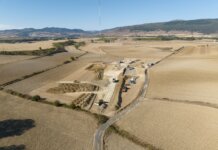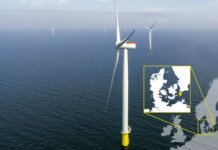GE has launched its Digital Wind Farm solution in India. The wind energy ecosystem leverages big data and analytics and pairs a turbine with digital infrastructure – in turn, enhancing production, reducing costs, and boosting availability and productivity over the life of the wind farm, says GE.
According to GE, this launch signifies the beginning of an important phase in technological innovations for the renewable energy market in India.
The company has also unveiled the latest version of its wind turbine hardware, the 2.3-116 machine, which comes with enhanced control technology and safety features; a 94-meter tower height; and a 116-meter-diameter rotor, offering approximately 30% more gross annual energy production over its predecessor, the 1.7-103.
“As India advances toward its clean energy goals, GE Renewable Energy has been actively partnering in the country’s progress. We launched the 1.7-103 wind turbine, designed and assembled in India, two years ago. Its successor, the 2.3-116, is ideal for India’s low wind-speed conditions,” explains Anne McEntee, president and CEO of GE’s onshore wind business.
According to the company, Digital Wind Farm leverages the Industrial Internet and GE’s Predix platform to improve asset performance, optimize operations and enhance business performance. Its applications include Wind PowerUp Services, Wind Energy Forecasting, PulsePOINT Condition Monitoring System and WindCONTROL Farm Control System.
PowerUp, for instance, brings together software- and hardware-enabled technologies to increase a wind farm’s output by up to 5% by taking into account environmental conditions, says GE, adding that Wind Energy Forecasting enables the integration of a larger amount of wind power into the grid by scheduling dispatches without placing incremental stress on the grid.
“India is pursuing an aggressive strategy to build renewable energy capacities to ensure a sustainable energy mix and meet future demand for electricity. It, therefore, becomes imperative to adopt smart energy systems to integrate an increasing amount of renewable power,” notes Banmali Agrawala, president and CEO of GE for South Asia.




